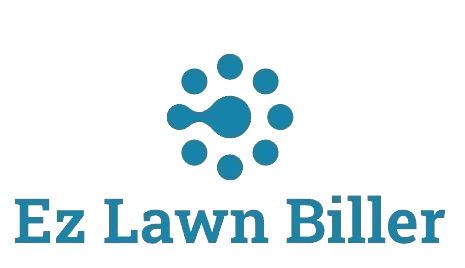Discover effective strategies to enhance client communication and follow-up in your lawn care business, ensuring customer satisfaction and loyalty.
Step-by-Step: How to Follow Up with Clients in Your Lawn Business
In the competitive world of lawn care, maintaining a strong relationship with your clients is crucial for long-term success. Following up with clients after services not only reinforces your commitment to quality but also opens doors for future business opportunities. In this blog post, we’ll explore step-by-step approaches to effectively follow up with clients in your lawn business. We’ll discuss the importance of timely communication, best practices for personalized interactions, and how to leverage technology, like lawn billing software, to streamline the follow-up process.
In a bustling market, where customer satisfaction can make or break a business, knowing how to engage effectively with clients is vital. Perhaps you’ve just completed a big landscaping project or a routine lawn maintenance service. The work doesn’t stop there; following up is where you can truly shine. This post will guide you through the essential steps to ensure your clients feel valued and appreciated, ultimately leading to increased loyalty and referrals.
Understanding the Importance of Client Follow-Up
Why is following up with clients so critical? First and foremost, it helps solidify the relationship between your business and your clients. A simple follow-up can demonstrate your dedication to their satisfaction and show that you genuinely care about the quality of your work. According to industry studies, businesses that engage in follow-up communication can increase their customer retention rates significantly.
Moreover, a follow-up can also serve as a touchpoint to gather feedback on your services, allowing you to make necessary adjustments. This feedback loop is essential for continuous improvement and can lead to enhanced service quality. Think of client follow-up as not just a courtesy, but an opportunity to gain insights that can help shape your future offerings.
Step 1: Timing is Everything
The first step in your follow-up strategy should be understanding when to reach out. Timing can vary based on the service provided, but a good rule of thumb is to follow up within 24 to 48 hours after the service has been completed. This timeframe ensures that the experience is still fresh in the client’s mind.
For urgent services, such as emergency landscaping or lawn treatments, a quicker follow-up may be necessary. Utilize various communication methods, such as phone calls, emails, or texts, depending on what you know your client prefers. For example, a personalized phone call can make a significant impact, whereas a follow-up email might be more suitable for routine services.
Step 2: Personalize Your Communication
Generic messages can often feel impersonal and fail to resonate with clients. Instead, personalize your communication to show that you value their individual needs. Refer to specific services provided, discuss details about their lawn or garden, and address any concerns they may have mentioned during your last interaction.
For instance, if you recently provided fertilization services, you might say, “I hope you’re noticing some positive changes in your lawn after the fertilization treatment last week. How has it been looking?” This approach not only reinforces your professionalism but also invites a dialogue, allowing clients to express their thoughts.
Step 3: Gather Feedback and Address Concerns
Incorporating a feedback mechanism into your follow-up process is vital. This will not only help you understand client satisfaction levels but also identify areas for improvement. You can send out a brief survey or directly ask clients for their thoughts during your follow-up conversations.
Make it easy for clients to provide feedback, and ensure them that their opinions are valued. If a client raises any concerns, address them promptly and professionally. For example, if they mention that certain areas of their lawn were not treated as expected, acknowledge the issue, and offer a solution, such as a complimentary visit to rectify the problem.
Step 4: Utilize Technology for Efficient Follow-Ups
In today’s digital age, leveraging technology can simplify and enhance your follow-up process. Consider using tools like a lawn service app or dedicated lawn billing software, such as [EZ Lawn Biller](https://ezlawnbiller.com/), to automate reminders and manage client communications effectively.
With such software, you can schedule follow-up emails or reminders to reach out to clients after services. This way, you won’t have to rely solely on memory or manual tracking. Moreover, these tools often come with integrated client management features, enabling you to maintain detailed notes about each client’s preferences and history.
Step 5: Offer Additional Value
Follow-ups are a great opportunity to offer additional value to your clients. You might provide them with seasonal tips for lawn care or suggest additional services that could benefit their outdoor spaces. For instance, if you notice that a client’s lawn may benefit from aeration in the upcoming months, you can inform them during your follow-up conversation.
This approach not only positions you as an expert in the field but also reinforces the idea that you’re looking out for their best interests. It opens the door for additional business opportunities while enhancing client satisfaction at the same time.
Step 6: Create a Consistent Follow-Up Schedule
Consistency is key in any follow-up strategy. Create a schedule that makes sense for your business and the services you offer. You might decide to follow up immediately after a service, again one month later, and then at the start of each new season.
Using a service company software can help you set these reminders and keep track of your follow-up efforts. This level of organization can ensure that no client is overlooked while also allowing you to spend more time focusing on service delivery rather than administrative tasks.
Step 7: Measure Your Follow-Up Success
Finally, it’s essential to measure the success of your follow-up efforts. Look at metrics such as client retention rates, the frequency of repeat services, and client feedback scores. Analyzing this data will help you understand the effectiveness of your follow-up strategy and where improvements might be necessary.
If you notice a trend towards higher customer satisfaction after implementing structured follow-ups, it can reinforce the importance of this practice for your business. Conversely, if client responses are lacking, it may be an indicator that your approach needs tweaking.
Best Practices for Client Communication in the Lawn Business
Beyond the steps outlined, here are some best practices for effective communication with your clients:
- Be proactive: Don’t wait for clients to reach out with questions or concerns. Stay ahead by providing regular updates on services and any potential issues.
- Keep it professional: Always maintain a professional tone, whether in person, over the phone, or via email. This helps to build trust and credibility.
- Be transparent: If there are delays or issues with a service, communicate these to your clients promptly. Transparency is key to maintaining good relationships.
- Utilize social media: Use platforms to showcase your work, share tips, and engage with your clients. This can foster a sense of community and brand loyalty.
Conclusion
Following up with clients in your lawn business is not just a courtesy; it’s a vital strategy for building lasting relationships and ensuring business growth. By implementing a structured follow-up process, personalizing your interactions, and leveraging technology like lawn billing software, you can significantly enhance client satisfaction.
Remember, each follow-up is an opportunity to further engage your clients, gather valuable feedback, and offer additional services that meet their needs. As you continue to refine your approach, you’ll find that a consistent follow-up strategy not only improves client retention but positions your business as a leader in the lawn care industry.
Don’t underestimate the power of a simple follow-up—embrace it as an integral part of your service delivery, and watch your lawn business thrive.




